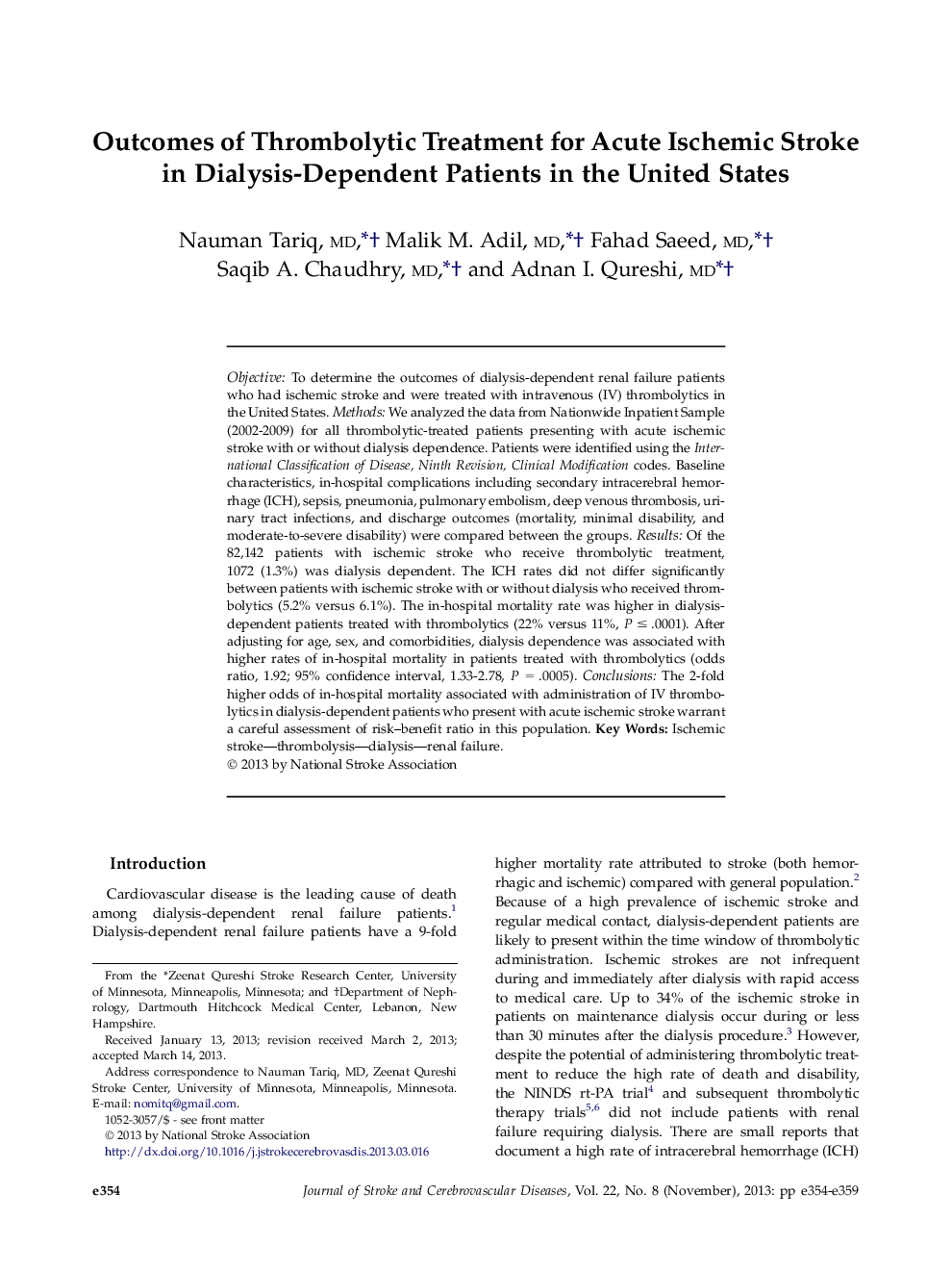| Article ID | Journal | Published Year | Pages | File Type |
|---|---|---|---|---|
| 2710657 | Journal of Stroke and Cerebrovascular Diseases | 2013 | 6 Pages |
ObjectiveTo determine the outcomes of dialysis-dependent renal failure patients who had ischemic stroke and were treated with intravenous (IV) thrombolytics in the United States.MethodsWe analyzed the data from Nationwide Inpatient Sample (2002-2009) for all thrombolytic-treated patients presenting with acute ischemic stroke with or without dialysis dependence. Patients were identified using the International Classification of Disease, Ninth Revision, Clinical Modification codes. Baseline characteristics, in-hospital complications including secondary intracerebral hemorrhage (ICH), sepsis, pneumonia, pulmonary embolism, deep venous thrombosis, urinary tract infections, and discharge outcomes (mortality, minimal disability, and moderate-to-severe disability) were compared between the groups.ResultsOf the 82,142 patients with ischemic stroke who receive thrombolytic treatment, 1072 (1.3%) was dialysis dependent. The ICH rates did not differ significantly between patients with ischemic stroke with or without dialysis who received thrombolytics (5.2% versus 6.1%). The in-hospital mortality rate was higher in dialysis-dependent patients treated with thrombolytics (22% versus 11%, P ≤ .0001). After adjusting for age, sex, and comorbidities, dialysis dependence was associated with higher rates of in-hospital mortality in patients treated with thrombolytics (odds ratio, 1.92; 95% confidence interval, 1.33-2.78, P = .0005).ConclusionsThe 2-fold higher odds of in-hospital mortality associated with administration of IV thrombolytics in dialysis-dependent patients who present with acute ischemic stroke warrant a careful assessment of risk–benefit ratio in this population.
